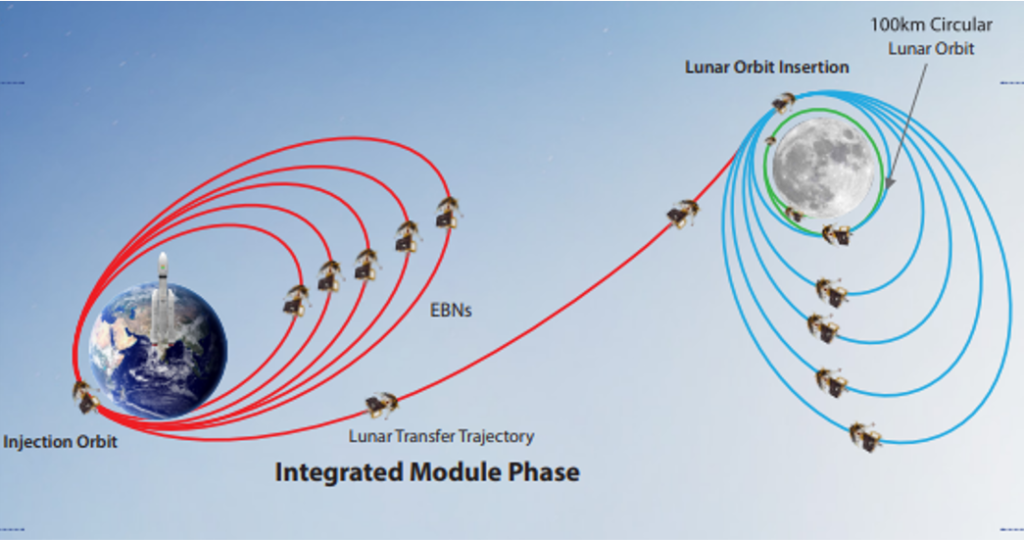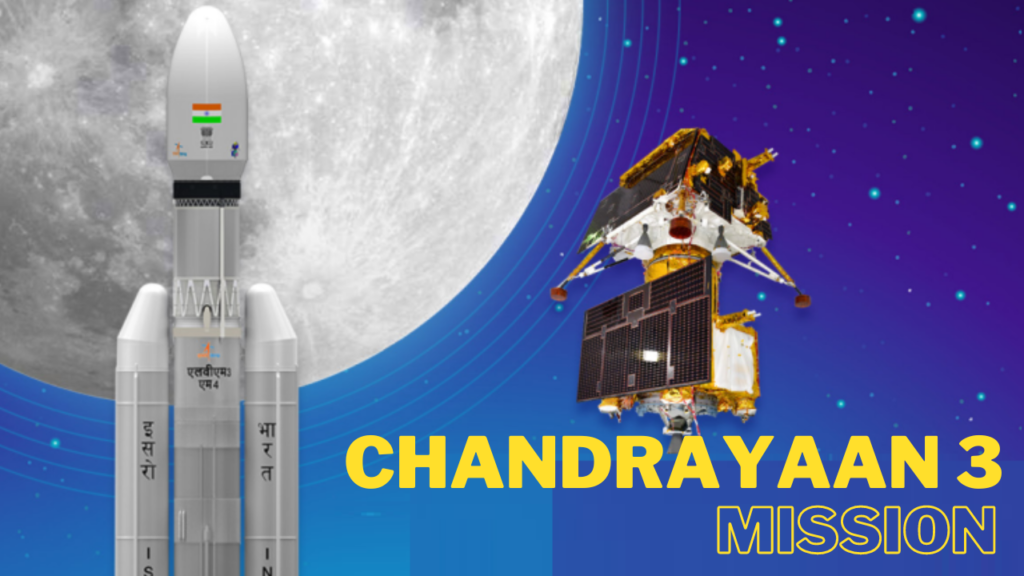Chandrayaan-3 Update
All eyes will be on Chandrayaan-3 as ISRO seeks to revive the “Vikram lander and Pragyan rover” today, September 22, 2023. ISRO is getting ready to try to make contact with its solar-powered Chandrayaan 3 Vikram Lander and rover Pragyan from the Chandrayaan-3 lunar mission once more in order to bring them back to life and allow them to resume scientific study now that the Moon is rising. The lander and rover were put into sleep mode earlier this month on September 4 and September 2, respectively, in preparation for the moon night falling on Earth’s lone natural satellite.
Chandrayaan 3 Mission
In order to demonstrate end-to-end capability in safe landing and wandering on the lunar surface, Chandrayaan-3 is a follow-up mission to Chandrayaan-2. It is configured with Landers and Rovers. LVM3 will launch it out of SDSC SHAR in Sriharikota. The lander and rover configuration will be propelled by the propulsion module up to a 100 kilometer lunar orbit. To examine the spectral and Polarimetric data of Earth from the lunar orbit, the propulsion module is equipped with the Spectro-Polarimetry of Habitable Planet Earth (SHAPE) payload.

Lander Payloads
Langmuir Probe (LP) to calculate the plasma density and its changes; Chandra’s Surface Thermophysical Experiment (ChaSTE) to measure thermal conductivity and temperature; Instrument for Lunar Seismic Activity (ILSA) to measure seismicity around the landing site. For lunar purposes, a NASA passive Laser Retroreflector Array is supported.

Rover payloads
Alpha Particle X-ray Spectrometer (APXS) and Laser Induced Breakdown Spectroscope (LIBS) for deriving the elemental composition in the vicinity of landing site.
Chandrayaan 3 Mission Overview
With the aim of researching and showcasing new technology necessary for interplanetary missions, Chandrayaan-3 is made up of an indigenous Lander module (LM), Propulsion module (PM), and Rover. The Lander will be able to soft land at a chosen location on the moon and release the Rover, which will conduct in-situ chemical analysis of the lunar surface while it is moving. There are scientific payloads on the Lander and the Rover that will conduct lunar surface tests. The main job of PM is to transport the LM from injection into the launch vehicle to the final 100 km circular polar orbit of the moon and then to release the LM from PM.
| Particulars | Details |
| Mission type | Lunar Mission |
| Mission by | ISRO |
| Mission duration | 2 months and 9 days (elapsed) |
| Launch date | 14 July 2023 |
| Rocket | LVM3 M4 |
| Launch site | Satish Dhawan Space Centre |
| Lander Name | Vikram |
| Rover Name | Pragyan Rover |
| Payloads | On lander Chandra’s Surface Thermophysical Experiment (ChaSTE) will measure the thermal conductivity and temperature of the lunar surface. Instrument for Lunar Seismic Activity (ILSA) will measure the seismicity around the landing site. Langmuir Probe (LP) will estimate the near-surface plasma density over time. On rover An alpha particle X-ray spectrometer (APXS) will derive the chemical composition and infer the mineralogical composition of the lunar surface. Laser-induced breakdown spectroscopy (LIBS) will determine the elemental composition (Mg, Al, Si, K, Ca, Ti, Fe) of lunar soil and rocks around the lunar landing site. On the propulsion module Spectro-polarimetry of Habitable Planet Earth (SHAPE) |
Chandrayaan 3 Mission Objective
The objective of Chandrayaan 3 Mission has been listed below:
- To demonstrate Safe and Soft Landing on Lunar Surface
- To demonstrate Rover roving on the moon and
- To conduct in-situ scientific experiments.
Challenges Of Chandrayaan-3 Mission
Solar panels are used on Chandrayaan-3. The lander and rover could therefore run on solar power, although their mission was only supposed to last 14 days starting on August 24. Since Chandrayaan-3 landed in the south pole of the Moon, where nighttime temperatures can drop to -200 degrees Celsius, the electronics of the spacecraft were not made to endure such extreme cold.
By resting the Vikram lander and Pragyan rover after fulfilling their objectives, ISRO took a chance. The batteries were fully charged while the lander and rover dozed off, waiting for them to awaken.
Chandrayaan-3 Rocket

LVM3 is the operational heavy lift launch vehicle of ISRO and has a spectacular pedigree of completing 6 consecutive successful missions. his
is the 4th operational flight of LVM3, aims to launch the Chandrayaan-3 spacecraft to Geo Transfer Orbit (GTO). LVM3 has proved its versatility to undertake most complex missions like:
- Injecting multi-satellites
- Mission planning to ensure safe relative distance among separated satellites through re-orientation and velocity addition maneuvers.
- Multi orbit (LEO, MEO, GEO) and execute interplanetary missions.
- India’s largest and heaviest launch vehicle ferrying Indian and international customer satellites.








